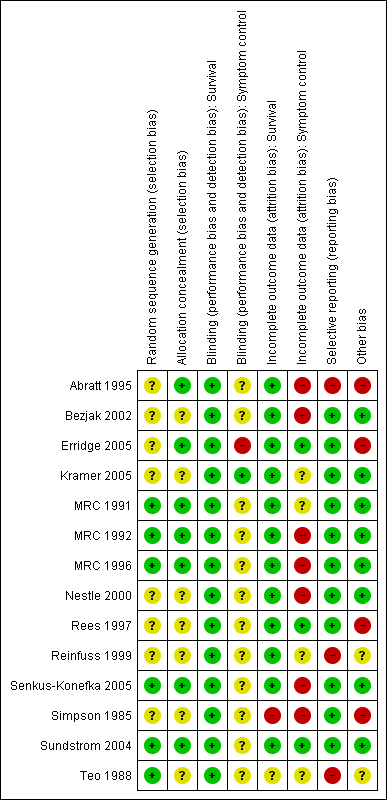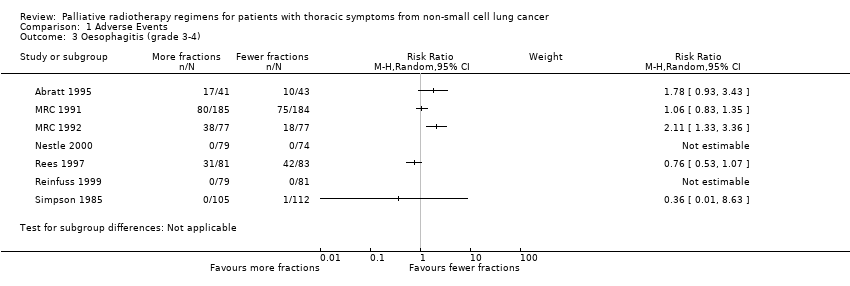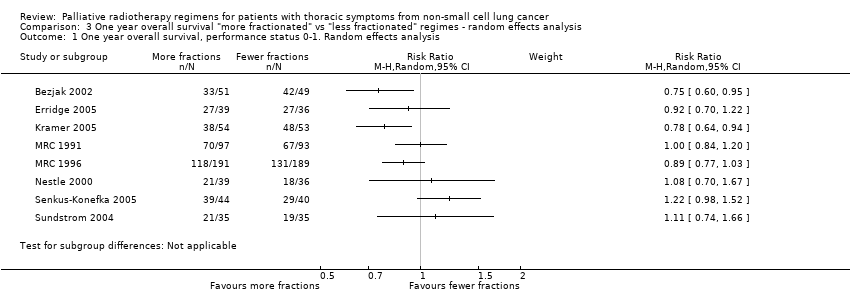Contenido relacionado
Revisiones y protocolos relacionados
Ludovic Reveiz, José‐Ramón Rueda, Andrés Felipe Cardona | 12 diciembre 2012
Sarah Burdett, Larysa Rydzewska, Jayne Tierney, David Fisher, Mahesh KB Parmar, Rodrigo Arriagada, Jean Pierre Pignon, Cecile Le Pechoux, on behalf of the PORT Meta‐analysis Trialists Group | 11 octubre 2016
Nick P Rowell, Chris Williams | 10 marzo 2015
Sarah Burdett, Jean Pierre Pignon, Jayne Tierney, Helene Tribodet, Lesley Stewart, Cecile Le Pechoux, Anne Aupérin, Thierry Le Chevalier, Richard J Stephens, Rodrigo Arriagada, Julian PT Higgins, David H Johnson, Jan Van Meerbeeck, Mahesh KB Parmar, Robert L Souhami, Bengt Bergman, Jean‐Yves Douillard, Ariane Dunant, Chiaki Endo, David Girling, Harubumi Kato, Steven M Keller, Hideki Kimura, Aija Knuuttila, Ken Kodama, Ritsuko Komaki, Mark G Kris, Thomas Lad, Tommaso Mineo, Steven Piantadosi, Rafael Rosell, Giorgio Scagliotti, Lesley K Seymour, Frances A Shepherd, Richard Sylvester, Hirohito Tada, Fumihiro Tanaka, Valter Torri, David Waller, Ying Liang, for the Non‐Small Cell Lung Cancer Collaborative Group | 2 marzo 2015
Noelle O'Rourke, Marta Roqué i Figuls, Nuria Farré Bernadó, Fergus Macbeth | 16 junio 2010
Renée Manser, Gavin Wright, David Hart, Graham Byrnes, Don Campbell, Zoe Wainer, Sera Tort | 24 enero 2005
Non‐Small Cell Lung Cancer Collaborative Group | 12 mayo 2010
Zu‐Yao Yang, Li Liu, Chen Mao, Xin‐Yin Wu, Ya‐Fang Huang, Xue‐Feng Hu, Jin‐Ling Tang | 17 noviembre 2014
Catherine Delbaldo, Stefan Michiels, Estelle Rolland, Nathalie Syz, Jean‐Charles Soria, Thierry Le Chevalier, Jean Pierre Pignon | 18 abril 2012
Madelon Pijls‐Johannesma, Dirk K M De Ruysscher, Philippe Lambin, Ruud Houben, Isabelle Rutten, Johan F. Vansteenkiste | 18 octubre 2004
Respuestas clínicas Cochrane
Sera Tort, Kwun M Fong | 15 marzo 2016
















